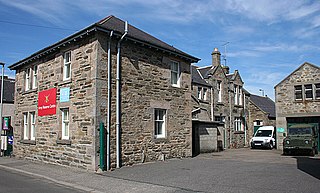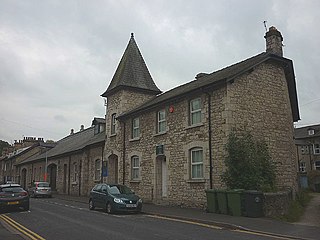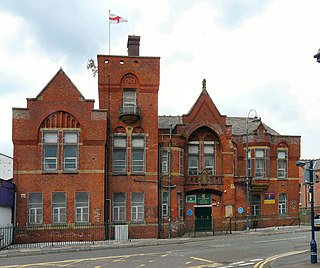
The 128th Infantry Brigade was an infantry brigade of the British Army. The brigade, known as the Hampshire Brigade, served in British India during the First World War but not as a complete formation. During the Second World War the 128th Infantry Brigade fought in the final stages of the North African Campaign in late in Tunisia and the Italian Campaign, and later in the Greek Civil War. Throughout its existence the brigade was composed almost entirely of battalions of the Hampshire Regiment.
No. 679 Squadron AAC is a British Army Reserve helicopter support squadron and is part of the 6 Regiment Army Air Corps. The squadron provides groundcrews to support Apache AH1 helicopters.

Fulham House is a military installation at 87 Fulham High Street, Fulham, London. It is a Grade II listed building.

The Paton Street drill hall is a military installation in Galashiels, Scotland.

The Ferry Road drill hall, known locally as Seaforth Barracks, is a military installation in Dingwall, Scotland.

The Cooper Park drill hall is a former military installation in Elgin, Scotland.

The Union Street drill hall is a military installation in Keith, Scotland.

The Fenkle Street drill hall is a military installation in Alnwick, Northumberland. It is a Grade II* listed building.

Londesborough Barracks is a military installation in Kingston upon Hull.

The St Paul's Street drill hall is a military installation in Huddersfield, West Yorkshire. It is a Grade II listed building.

The Queen Katherine Street drill hall, sometimes known as the Aynam Road drill hall is a military installation located in Queen Katherine Street, off Aynam Road, in Kendal, Cumbria, England.

The Carlton Place drill hall is a military installation in Southampton, Hampshire.

The Holdenhurst Road drill hall is a former military installation in Bournemouth, Dorset.

The Drill Hall Road Army Reserve Centre is a military installation in Newport, Isle of Wight.

The Whittimere Street drill hall is a former military installation in Walsall, West Midlands.

The Priory Road drill hall is a military installation at Hornsey in London.

The Old Street drill hall is a former military installation in Ashton-under-Lyne, Greater Manchester, England.

The Rifle Street drill hall is a former military installation in Oldham.

The Horninglow Street drill hall is a former military installation in Burton upon Trent. It is a Grade II listed building.

The 6th Battalion, Hampshire Regiment was an infantry battalion of the British Army. Part of the Volunteer Force, later the Territorial Force, the battalion was part of the Hampshire Regiment and recruited from Portsmouth, Hampshire. It served as infantry during World War I and as a Royal Artillery regiment during and after World War II.




















